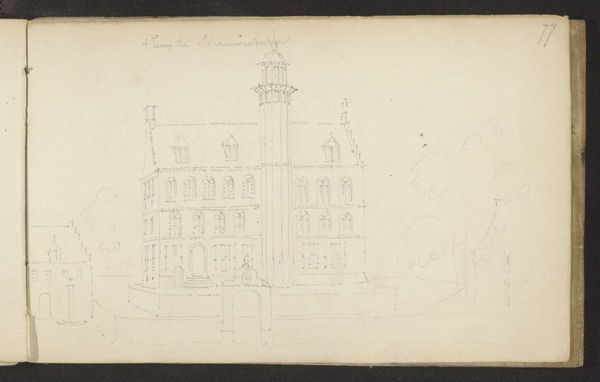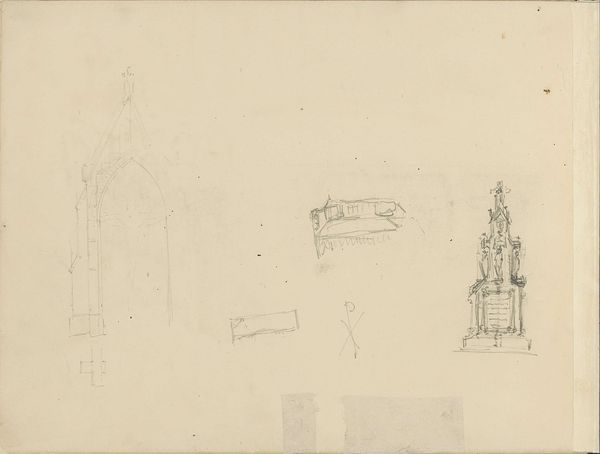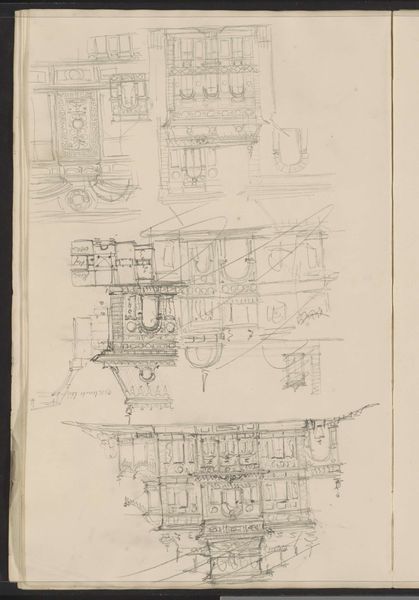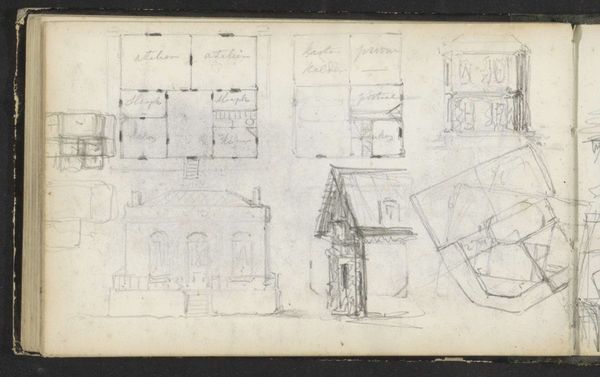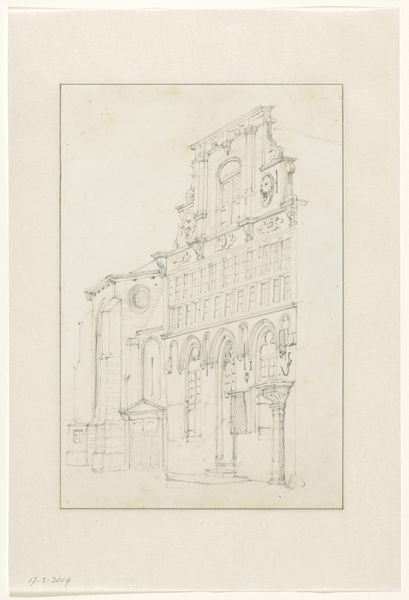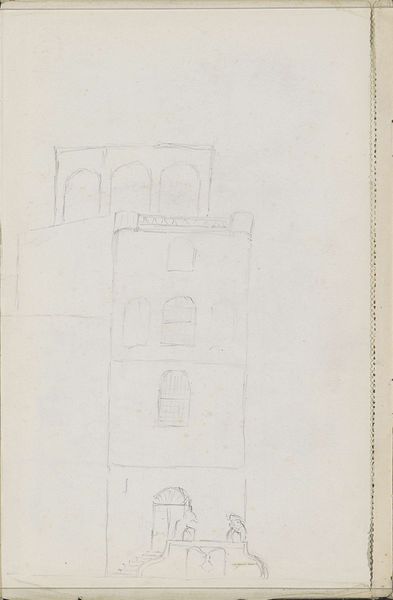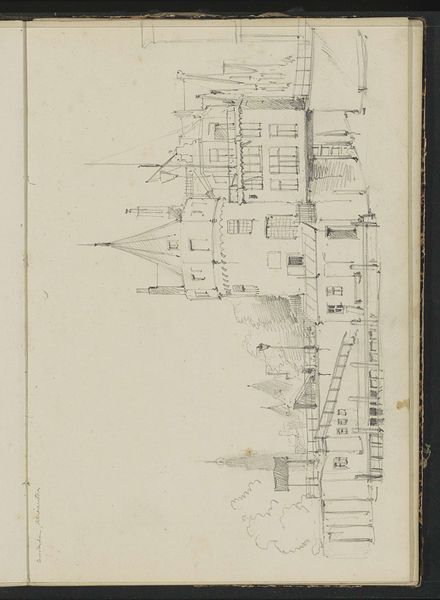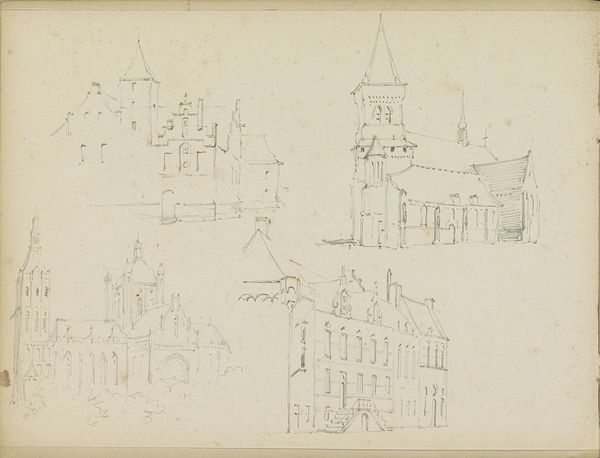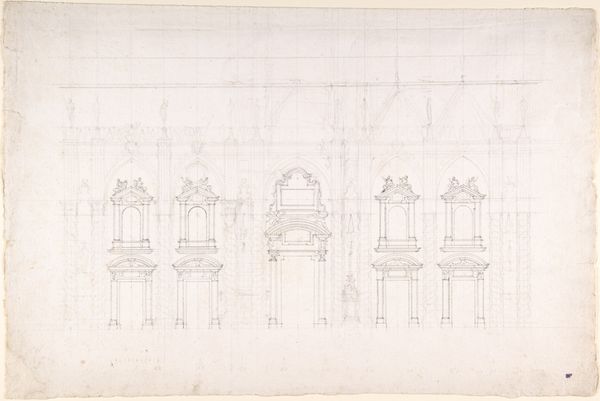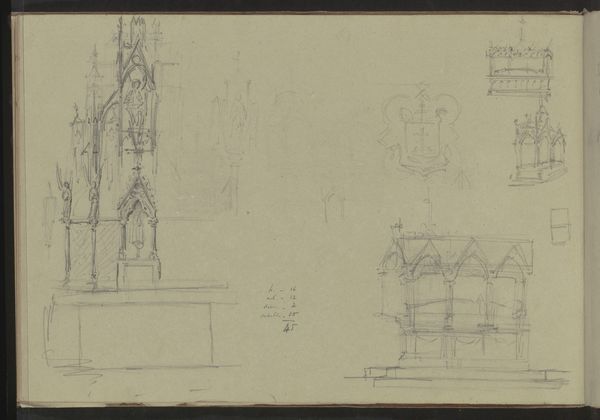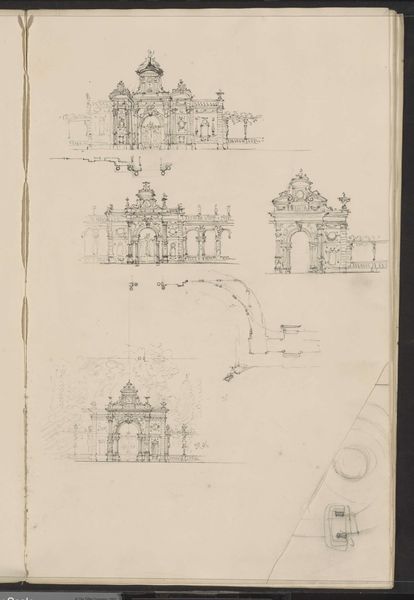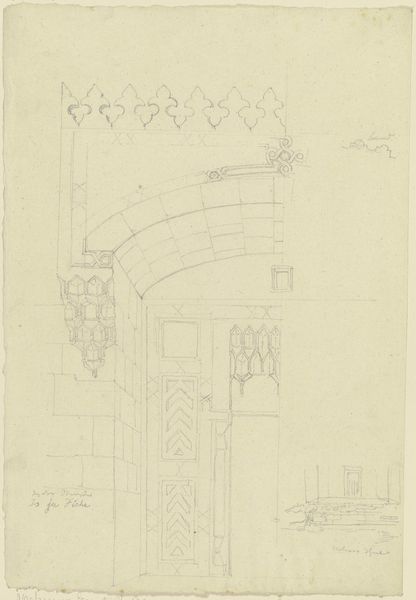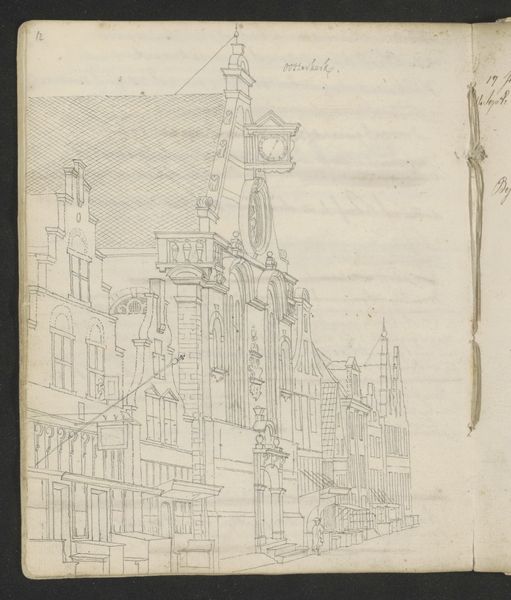
Copyright: Rijks Museum: Open Domain
Curator: At first glance, the building in this pencil drawing conveys a sense of monumental calm, despite its sketchy quality. Editor: Indeed. What we're viewing is Johan R. Kruyff's "Ontwerpen voor de façade van een gebouw," a design for a building facade, created in 1865. The work reveals a strong engagement with Neoclassical architectural principles. Curator: Note how Kruyff uses geometric shapes to construct the facade, the repetition of arched windows on the ground floor that contrast with the rectangular ones above. It speaks to a balanced, rational design. Editor: Yes, and that rationality must be placed within the context of 19th-century urban development. The city was undergoing significant transformations, driven by industrialization and expanding populations. Designs like this one reflected a desire for order and control in the urban environment. Curator: I agree. The details on the upper floors, that small balcony, the decorative cornice...it's a visual language of power, communicating solidity and permanence through carefully considered architectural features. Editor: Also, the unfinished aspects offer a glimpse into the creative process itself. You can observe how different possibilities of arcades and ornamentation may have played out on the paper itself before the architect settled on this precise and rather elegant solution. Curator: The drawing exemplifies how architectural designs served as a means to assert civic pride and stability, expressing society's values through a structure's aesthetic form. Editor: And within its pencil strokes, this artwork also contains a rich sense of historical progress and confidence, and all that may entail. What a fascinating demonstration of lines! Curator: Precisely; the linear clarity here makes such a claim all the more engaging.
Comments
No comments
Be the first to comment and join the conversation on the ultimate creative platform.
